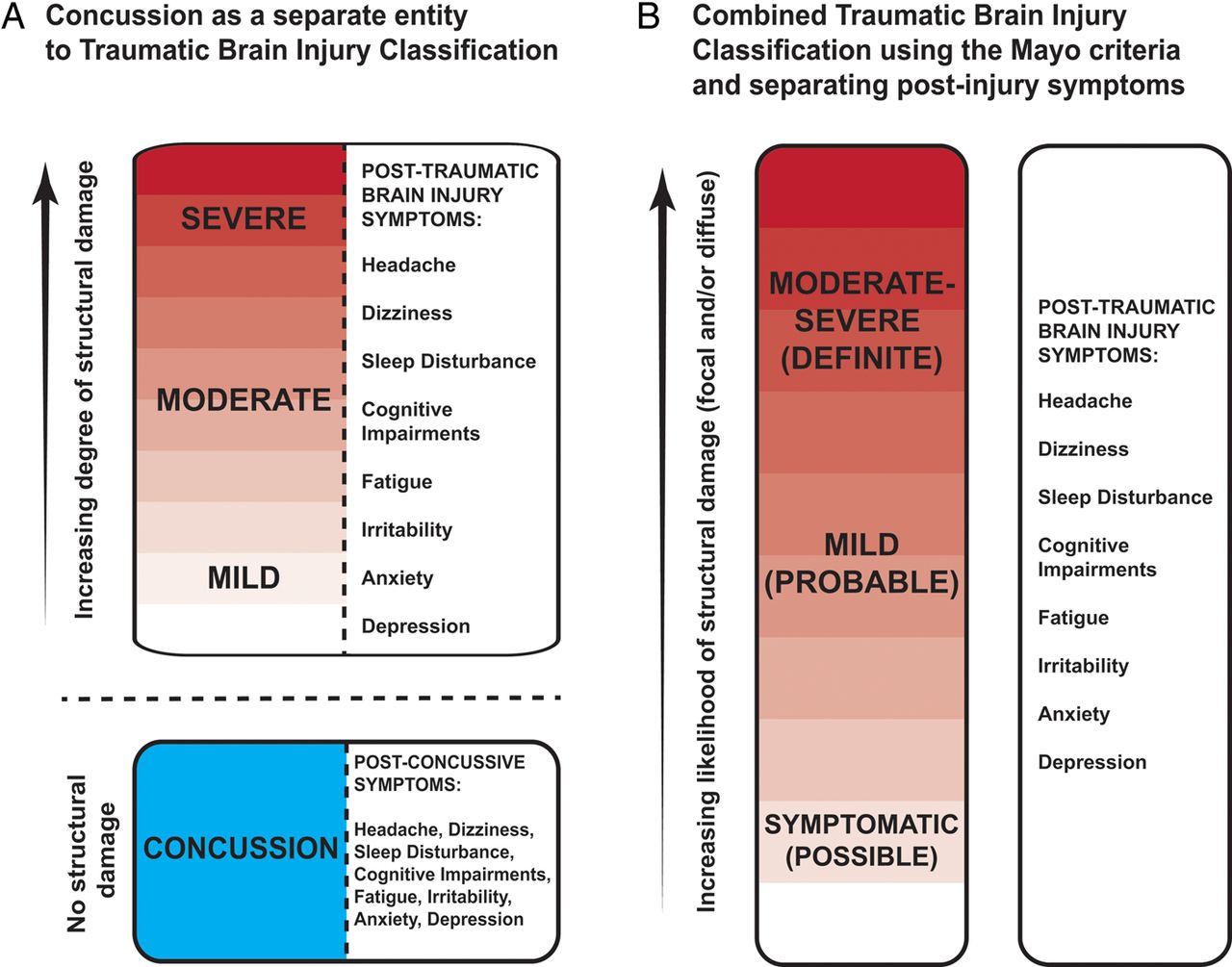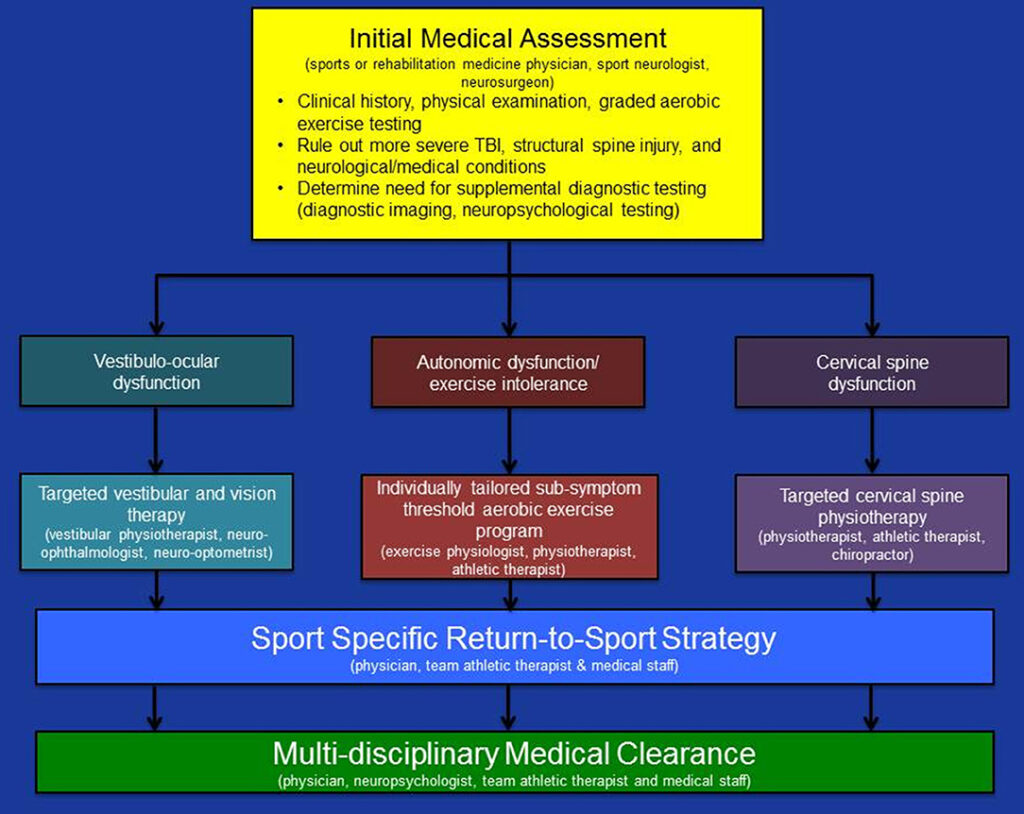A concussion, often abbreviated as “mTBI” (mild traumatic brain injury), is a type of brain injury that occurs when the head sustains a blow or jolt, causing the brain to move rapidly within the skull. This sudden movement can lead to temporary changes in brain function and may result in a wide range of physical, cognitive, and emotional symptoms. Concussions are commonly associated with sports injuries, car accidents, and falls, but they can occur in any situation where there is significant impact to the head. Understanding what a concussion is, its causes, symptoms, and recovery process is essential for ensuring proper care and minimizing long-term effects.

What Is a Concussion?
A concussion is a form of traumatic brain injury that affects the way the brain functions. Unlike more severe brain injuries, concussions are typically classified as mild because they do not usually cause permanent damage. However, they should still be taken seriously, as repeated concussions or improper management can lead to complications. When the head experiences a sudden impact, the brain can shift inside the skull, leading to bruising, stretching, or damage to nerve cells. This disruption in normal brain activity can cause a variety of symptoms that may appear immediately or develop over time.
How Does a Concussion Affect the Brain?
The human brain is a delicate organ surrounded by cerebrospinal fluid, which acts as a cushion to protect it from minor impacts. However, when a forceful blow or jolt occurs, this protective mechanism may not be enough to prevent the brain from moving and colliding with the inner walls of the skull. This collision can result in chemical changes within the brain and impair the normal functioning of brain cells. While the exact mechanisms of a concussion are still being studied, researchers believe that these changes interfere with communication between neurons, leading to the symptoms associated with concussions.
Common Causes of Concussions
Concussions can happen in various situations, and understanding their common causes can help individuals take preventive measures. Below are some of the most frequent scenarios that lead to concussions:
Sports-Related Injuries
- Contact sports such as football, soccer, hockey, and boxing carry a higher risk of concussions due to the physical nature of these activities.
- Falls during sports like gymnastics, skiing, or skateboarding can also result in head injuries.
- Even non-contact sports like basketball or volleyball pose risks if players collide with each other or fall awkwardly.
Motor Vehicle Accidents
Car crashes are another leading cause of concussions. During an accident, the head may strike the steering wheel, dashboard, or windshield, causing trauma. Even without direct impact, the rapid deceleration forces involved in a collision can cause the brain to move violently within the skull.
Falls
Falls are the most common cause of concussions, especially among young children and older adults. Tripping, slipping, or falling from heights can result in the head hitting a hard surface, leading to a concussion. Elderly individuals are particularly vulnerable due to age-related balance issues and weakened bones.
Physical Assaults
Acts of violence, such as punches, kicks, or blows to the head, can cause concussions. Domestic violence, fights, and other forms of physical aggression are significant contributors to traumatic brain injuries.
Symptoms of a Concussion
The symptoms of a concussion can vary widely depending on the severity of the injury and the individual affected. Some symptoms may appear immediately after the incident, while others may take hours or even days to manifest. Recognizing these signs is crucial for seeking timely medical attention. Below are the main categories of concussion symptoms:
Physical Symptoms
- Headache or pressure in the head
- Nausea or vomiting
- Dizziness or balance problems
- Blurred vision or sensitivity to light
- Ringing in the ears or hearing difficulties
- Fatigue or feeling sluggish
Cognitive Symptoms
- Confusion or feeling mentally foggy
- Difficulty concentrating or remembering
- Slowed reaction times
- Feeling disoriented or forgetful about recent events
Emotional and Behavioral Symptoms
- Irritability or mood swings
- Anxiety or nervousness
- Sadness or feelings of depression
- Increased emotional sensitivity or crying easily
Sleep-Related Symptoms
- Sleeping more than usual
- Sleeping less than usual
- Trouble falling asleep
- Feeling drowsy during the day
Diagnosing a Concussion
Diagnosing a concussion involves a combination of clinical evaluation, symptom assessment, and sometimes imaging tests. Since concussions do not always show up on standard imaging scans like X-rays or CT scans, healthcare providers rely heavily on patient history and observable symptoms.
Initial Assessment
When someone experiences a head injury, the first step is to assess their condition using tools like the Glasgow Coma Scale, which evaluates consciousness levels. Questions about how the injury occurred, the presence of symptoms, and any changes in behavior are critical for making an accurate diagnosis.
Neurological Examination
A thorough neurological exam checks for signs of brain dysfunction, including coordination, reflexes, strength, and sensory abilities. The doctor may also test memory, concentration, and recall to identify cognitive impairments.
Imaging Tests
In cases where more severe brain injuries are suspected, imaging tests such as magnetic resonance imaging or computed tomography scans may be ordered. While these tests cannot diagnose a concussion directly, they help rule out bleeding, swelling, or fractures that could require immediate intervention.
Recovery Process After a Concussion
Recovering from a concussion requires patience and adherence to medical advice. The duration of recovery varies from person to person, with most individuals experiencing improvement within one to two weeks. However, some cases may take longer, particularly if the injury was severe or if multiple concussions have occurred.
Immediate Rest Period
In the initial days following a concussion, rest is essential to allow the brain to heal. This includes both physical and mental rest. Activities such as reading, using electronic devices, attending school or work, and engaging in strenuous exercise should be minimized until symptoms begin to improve.
Gradual Return to Activity
Once symptoms start to subside, individuals can gradually reintroduce light activities under medical supervision. For athletes, this process involves a stepwise return-to-play protocol that ensures safety before resuming full participation in sports. Each stage must be completed without worsening symptoms before progressing to the next level.
Managing Persistent Symptoms
Some people experience prolonged symptoms known as post-concussion syndrome, which can last for weeks or months. In such cases, additional treatments may be necessary, including physical therapy, cognitive rehabilitation, or counseling to address emotional challenges. Medications may also be prescribed to manage specific symptoms like headaches or sleep disturbances.
Preventing Future Concussions
After recovering from a concussion, taking steps to prevent future injuries is vital. Wearing appropriate protective gear during sports, driving safely, and making home environments safer for children and elderly individuals can reduce the risk of another concussion. Education and awareness play key roles in prevention efforts.
When to Seek Medical Attention
While many concussions resolve on their own with proper care, certain warning signs indicate the need for urgent medical attention. These red flags include:
- Loss of consciousness, even briefly
- Severe or worsening headache
- Repeated vomiting
- Seizures or convulsions
- Weakness or numbness in limbs
- Slurred speech or difficulty waking up
- Significant confusion or unusual behavior
If any of these symptoms occur, it is important to seek emergency care immediately, as they may indicate a more serious brain injury.





